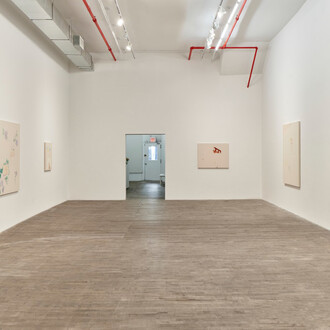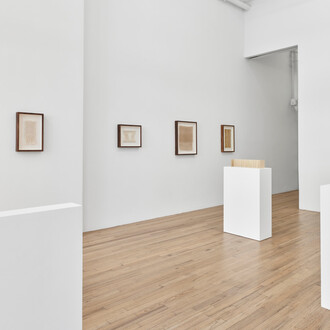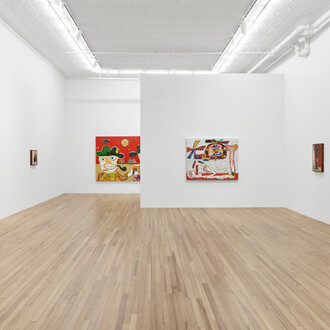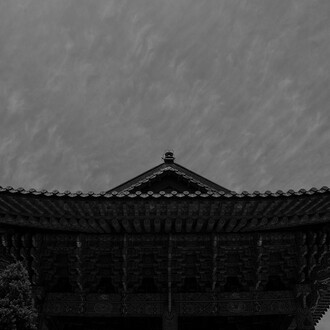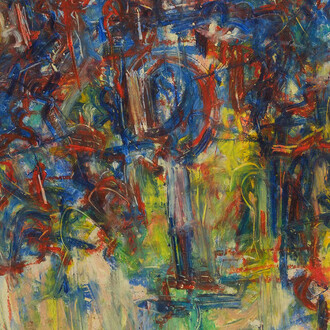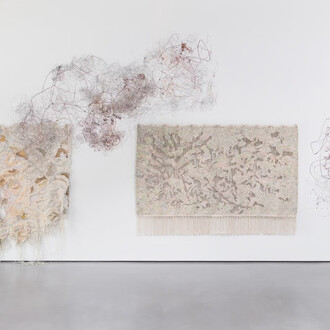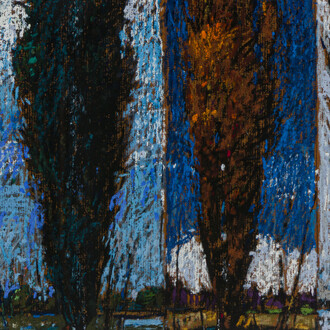Andrew Kreps Gallery is pleased to announce Mysterious delights of my heart, an exhibition of works by Hollis Sigler (b. 1948, Gary, Indiana, d. 2001, Lincolnshire, Illinois).
In the late 1970s, Sigler abandoned photorealism in favor of a new style of representation, seeking to develop a visual language that centered the experiences of women. Influenced by the drawings of her youth, and the paintings of Florine Stettheimer, Sigler created compositions set within skewed, nearly theatrical spaces, marked by the figure’s absence. Scenes ranging from familiar, suburban homes, to almost surreal landscapes are littered with personal effects suggesting the immediate aftermath of an event. Vanities are strewn with personal items, clothing is littered across the ground and floor, along with flung shoes, open windows, and empty chairs. Sigler viewed the removal of the figure as a way to generate visual tension, while also inviting the viewer to insert their own experience, and resonance. Titling her works within their frame, she further narrativized the emotional cycles of life, and fugitive emotional states - passion, romance, desire, as well as fear. In Under her dark pain is rage, 1982, the shadowed silhouette of a woman is crowded amongst household anxieties, as veiled painting easels float above, suggesting her own anxieties around the traditional gendered roles of “woman’s work.” And in Mysterious delights of my heart, 1983, a fantastical, imagined beachfront reflects the ecstasy of newfound love.
Sigler's work shifted again in 1985 after being diagnosed with breast cancer, a disease that had also afflicted her mother and grandmother. While initially Sigler kept this private, her works became charged with frenetic brushstrokes and agitated colors. Tidal waves, earthquakes, and fires created scenes of disequilibrium and imbalance, connecting her own fears of impermanence with that of the natural world, and impending ecological crisis. Sigler later wrote, “Although I wanted emotions in my art, I was determined to be silent about their cause…I wanted the viewers to have a dialogue with the art, to be able to put themselves in the picture…The works should touch us in our shared emotional space.”
After her cancer recurred in 1992, the subject of illness adopted a newfound urgency, as she started her series Breast cancer journal: walking with the ghosts of my grandmothers that same year. The intricate, handmade frames that had become typical of her drawings and paintings, were now used as a vehicle for her voice and the voices of others, adorning them with medical research, quotes from figures including Audre Lorde, and excerpts from her own diaries. Increasingly intertwined with her own advocacy for women’s health, Sigler hoped that "the work would gain the power to destroy the silence surrounding the disease." The resulting works, four of which are included in the exhibition, formed an intensely vulnerable chronicle of her experience with the illness, such as It’s The hardest part of life… leaving, 1999, in which Sigler details the small, fleeting pleasures of life as she writes, “I love the changing of the seasons when I can shed the isolation of winter to the expansiveness of summer…” Despite her waning health, Sigler remained resolute, positioning her work not only as a personal catharsis but also as a way to demystify the disease.
The gallery would like to thank Patricia Locke and Deborah Rethemeyer for their collaboration on this exhibition.





